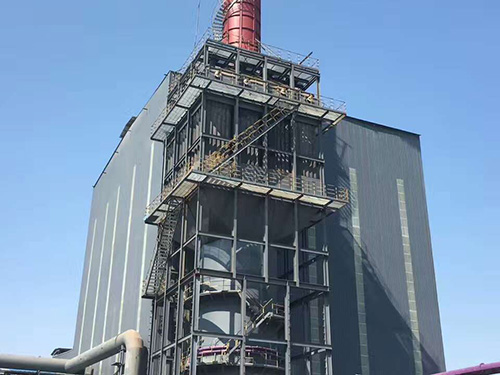Wet Electrostatic PrecipitatorClassification Of
There Are Two Main Structural Forms Of Wet Electrostatic Precipitators. One Is To Use Corrosion-resistant (based On Actual Reports) Conductive Materials (which Can Be Non-metallic Materials With Excellent Conductivity Or Metal Materials With Corrosion-resistant (based On Actual Reports) Characteristics) As The Dust Collector. The Other Is To Use Non-conductive Non-metallic Materials As The Dust Collector By Forming A Conductive Water Film Through Water Spraying Or Overflow.
Wet Electrostatic Precipitators Can Also Be Divided Into Cross Flow (horizontal) And Vertical Flow (vertical) According To The Flow Direction Of The Exhaust Gas. Cross Flow Type Is Mostly A Plate Structure, And The Gas Flow Direction Is Horizontal In And Out, Similar In Structure To Dry Electrostatic Precipitators; Vertical Flow Is Mostly A Tubular Structure, With Gas Flowing In And Out In A Vertical Direction. Generally Speaking, Under The Same Ventilation Cross-sectional Area, The Efficiency Of A Vertical Flow Wet Electrostatic Precipitator Is Twice That Of A Horizontal Flow Type.
The Dust That Settles On The Electrode Plate Can Be Washed Off With Water. Wet Cleaning Can Avoid The Re Flying Of Captured Dust And Achieve High Dust Removal Efficiency. Due To The Absence Of A Vibration Device, The Operation Is Also Relatively Good. The Device That Uses Water Spray Or Overflow To Form A Conductive Film On The Surface Of The Dust Collection Electrode Has Problems With Corrosion, Sludge And Sewage Treatment, And Is Only Used When The Gas Dust Concentration Is Low And High Dust Removal Efficiency Is Required; The Wet Electrostatic Precipitator Using Corrosion-resistant (based On Actual Reports) Conductive Materials As The Dust Collector Electrode Does Not Require Long-term Water Spraying Or Overflow Water. It Only Needs To Be Regularly Flushed According To The System Operation Status, Consuming Only A Small Amount Of Water. This Water Can Be Recycled And Reused, And The Dust Collection System Has Basically No Secondary Pollution.
According To The Flow Direction Of Exhaust Gas, Wet Electrostatic Precipitators Can Also Be Divided Into Two Types: Horizontal (horizontal) And Vertical (vertical). The Lateral Flow Is Mostly In A Plate-like Structure, With The Airflow Direction Being Horizontal In And Out, And The Structure Is Similar To That Of A Dry Electrostatic Precipitator. Vertical Flow Is Mostly A Tubular Structure, With Airflow Entering And Exiting In A Vertical Direction. In General, Under The Same Cross-sectional Area Conditions, The Efficiency Of A Vertical Flow Wet Electrostatic Precipitator Is Twice That Of A Cross Flow Precipitator.
The Dust Deposited On The Plate Can Be Washed Away By Water. Wet Cleaning Can Prevent The Collected Dust From Flying Again And Achieve High Dust Removal Efficiency. Due To The Non Vibration Beating Device And Excellent Operation, The Device Has Problems Such As Corrosion, Sludge And Sewage Treatment. Only When The Dust Concentration Of The Gas Is Low And The Dust Removal Efficiency Is Good, Can A Conductive Film Be Formed On The Surface Of The Dust Remover Through Water Spray Or Overflow. The Wet Electrostatic Precipitator Uses Corrosion-resistant (based On Actual Reports) Conductive Materials As The Dust Collector, Without The Need For Long-term Water Spraying Or Overflow. It Only Cleans Regularly Based On The Operation Of The System And Consumes Very Little Water. This Part Of The Water Can Be Recycled. The Dust Removal System Has No Secondary Pollution.




